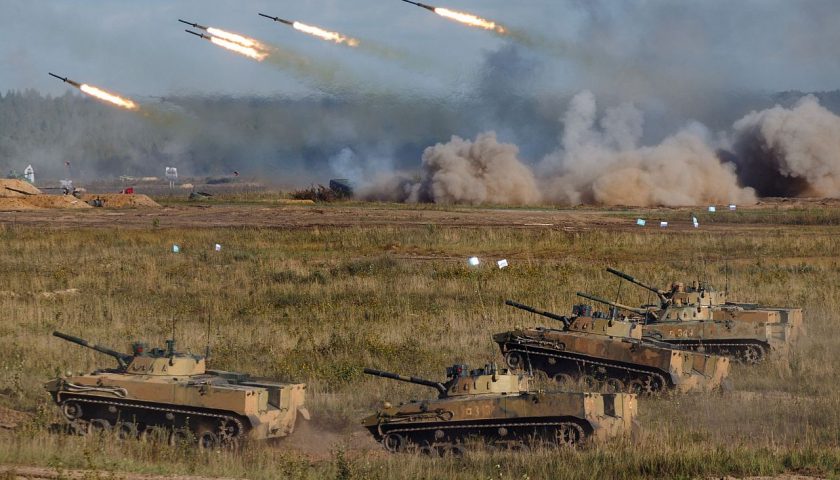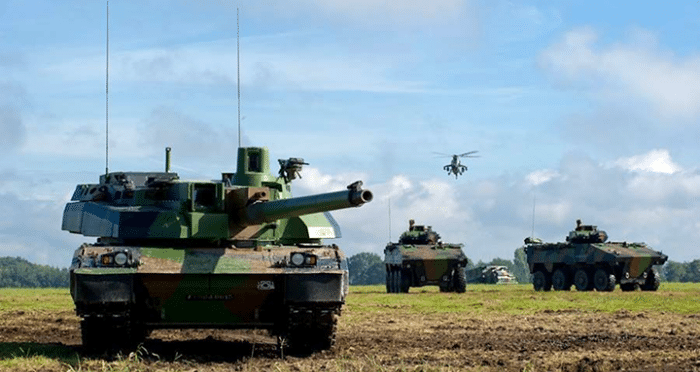On June 5, 1947, the American Secretary of State and hero of the Second World War, General Georges Marshall, announced the implementation of a massive plan of assistance to European countries for the reconstruction of their economy, which will remain at posterity under the name of "Marshall Plan". In just 4 years, it was then $ 16,5 billion, or 10% of the GDP of the European countries of the Western bloc at the time, which were allocated by the United States for European reconstruction in the form of loans, and which allowed the old continent to reveal itself much more quickly from the devastation of the war than expected, in large part by financing equipment imported from the United States. This program was also one of the pillars of European construction, by making it possible not to reproduce the errors of the Versailles agreements of the First World War, causing Germany to bear the costs of reconstruction. 70 years later, the European Union relied on a similar mechanism to mitigate the effects of the Covid-19 crisis, by allocating to these members a global amount of € 750 billion in an economic recovery plan representing 5,6% of the Union's GDP, again to get out of the effects of this crisis more quickly.
But there is another crisis which is looming today, and which for the time being is by no means addressed by the European authorities. In fact, the growing tensions between Kiev and Moscow, accompanied by the mobilization and deployment of Russian forces on the Ukrainian borders, pose a major risk to European stability, from a military, economic and social point of view. Apart from a promise of severe sanctions from the United States and Europeans, the Western response to this Russian offensive in Ukraine that some now consider probable in the months, or even weeks to come, Europe, such as the European chanceries seem incapable of acting and neutralizing the ambitions of the Kremlin.
European armies facing Russian military might
And for good reason ! In addition to the understandable reluctance of European leaders to engage in a military and diplomatic escalation against Russia, also the leading military power of the Old Continent and strategic supplier of gas for many countries of the Union, the European countries do not simply do not have the capacity, on their own, to deploy an armed force sufficient in number, and in material, to weigh in this crisis. Because faced with the Russian military threat, and the reconstruction plan for the armies of Moscow started in 2008 after the intervention in Georgia, and particularly increased with the return of Vladimir Putin to the Kremlin in 2012, the European armies, for their part, are coming out. barely of a major capacity crisis having largely eroded their operational potential. This took its roots on two pillars: the illusion of the “benefits of peace” and of Western technological power following the collapse of the Soviet bloc on the one hand; and the effects of wars against terrorism or qualified as such, in Afghanistan, Iraq or the Sahel, on the other hand; all having contributed to considerably erode the means available to the European armies, as well as the budgets necessary for their recapitalization.

For the time being, the EU's recovery plan linked to the Covid crisis is above all directed towards actions to revive and modernize national economies. With the exception of a few countries, such as Italy, European countries have chosen not to allocate part of this European funding to the defense effort, and to the modernization / recapitalization of their armies. However, despite the efforts announced since 2014 to increase the defense efforts of each member of NATO to 2% of GDP, the current situation is clear in the east: while, according to American intelligence, the device Russian offensive tends to consist of 175.000 active soldiers, more than 100 tactical combat battalions and more than 1000 combat tanks, supported by nearly 100.000 reservists in the second and third line, the European armies could not, in the best of circumstances. case, mobilize within one to two months, that 50.000 men and 250 to 300 battle tanks, a device quite insufficient to dissuade Moscow to act.
Under these conditions, can we imagine that an equivalent of the European recovery plan be launched, not to revive the economies of the countries, but this time to urgently restore the balance of power in the East, and thus neutralize the excessive ambitions and aspirations of the Kremlin towards its neighbors? Until now, the EU has always refused to give a special status to national investments in defense, leaving each country the responsibility of earmarking its own resources while respecting the rule of 3% budget deficit. And for many European leaders, defense investments, in particular to modernize and expand their forces, came at the end of the priority list in the face of economic and social needs.
The migration risk of the Ukrainian crisis

The rest of this article is for subscribers only
The Classic subscriptions provide access to
all articles without advertising, starting at € 1,99.
Newsletter subscription
Register for the Meta-Defense Newsletter to receive the
latest fashion articles daily or weekly


Comments are closed.